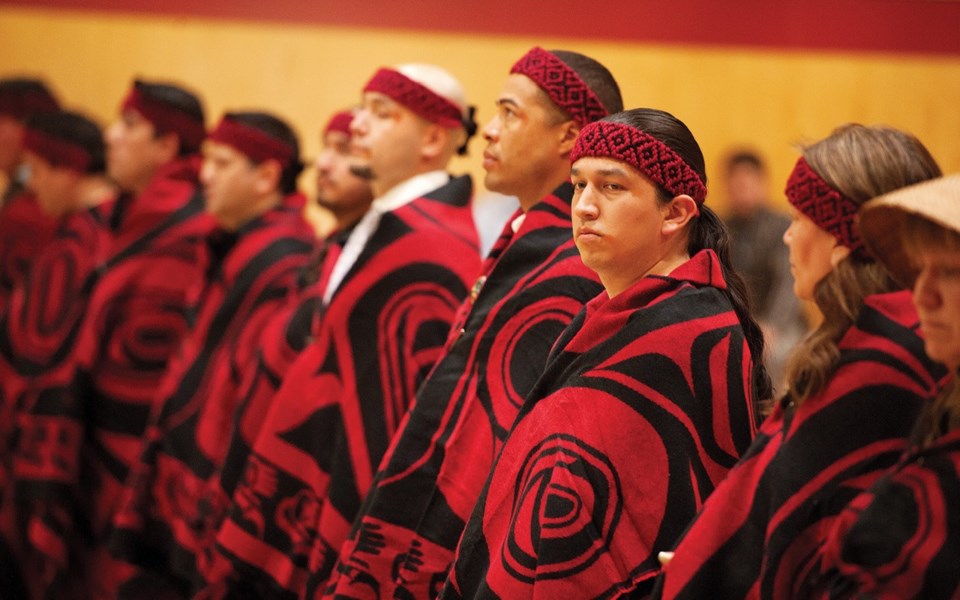The Squamish Nation is heralding a land transfer agreement it inked in relation to the Woodfibre LNG project as the receipt of property that has been owed for quite some time.
"The history of land confiscation from the Squamish Nation going back to Confederation has always been one where our people and our leaders, going back to the founding of the Nation, have articulated that we never surrendered our lands. It's all ours," said Khelsilem, also known as Dustin Rivers, a spokesperson for the Nation.
"The Crown, through the province or the feds, claim jurisdiction over our lands. We contest that jurisdictional claim. And we continue to fight for the return of our lands back to our community. And we've been successful at that in a number of areas. And we'll continue to press that fight."
Khelsilem said some of the lands that were part of this latest deal were originally part of negotiations under the BC Rail agreement in the early 2000s.
"They've been on the books as sites identified for repatriation to the Nation for quite a long time, prior to even the Woodfibre project being considered," he said.
"The agreement is just concluding what had previously been identified as a priority for the Nation. And the lands have come back to the Nation."
The agreement is part of a benefit deal related to the Woodfibre LNG project. In exchange for the Nation's support, the province promised a package that included millions of dollars in cash, as well as land transfers and leases, among other things.
Last fall, it was found the overall value is altogether roughly more than $1.1 billion.
"The purpose of the agreement is to enable the parties to share in the benefits associated with the Woodfibre project and reflect (the Squamish Nation's) support for the Woodfibre project," reads the Squamish Liquefied Natural Gas Benefits Agreement.
However, it was a decision that divided the Nation's council. Support was far from unanimous, with the motion in favour of the benefit agreement passing in an 8-6 decision.
The agreement was announced last year, but the finer details—especially regarding which lands were being transferred—are only now starting to become apparent.
The document was signed off in March, but started to get attention from Squamish residents after it was pointed out that lands in the Murrin Park area, known as the Watts Point parcel, are going to be subject to the transfer.
Those lands, however, are not the only ones that will be transferred to the Nation. The others are: lands near the Waiwakum 14 Reserve and Poquiosin and Skamain 13, which are close to the airport, dubbed the north and south Reserve Regularization parcels; lands south of Alice Lake Park, known as the Sea to Sky Option Lands; parcels in the Mashiter Creek area; and lands in the Valleycliffe area.
Khelsilem said the Nation hasn't determined what it will do with those lands.
In the meantime, some residents have expressed concern that parts of the Murrin Park area may no longer be accessible to recreationalists.
"Most people assume those cliffs and hiking trails are within the provincial park, as they are accessed from the provincial park parking lot. However, that is not correct," a statement from the Squamish Access Society said.
"(The Squamish Access Society's) preferred outcome would be that the climbing/hiking portion of the land parcel be excluded from the agreement and brought into the provincial park."
Khelsilem said the Nation has yet to make any plans about the Murrin area lands.
The benefit agreement also includes cultural lease lands scattered throughout the Howe Sound area that would be made available for the Nation's use.
Khelsilem said it would be used for cultural programming and youth education, as well as hunting and food gathering.
For example, the Nation has a youth program that takes canoe trips to show young people the Nation's territory and instil some of the First Nation's values.
"There's a lot of opportunity to try to create for our young people to be able to learn about their history and their culture and their identity and their language," said Khelsilem.
The Nation also hopes to reassert its presence in those areas, he said.
"The context is (that) for so long our people have been pushed out and marginalized from accessing our territory because so much of Howe Sound was privatized by the government," he said.
Some recreationalists have expressed support for the land transfer.
"We are aware of the agreement and we recognize that we live and ride on the lands of the Squamish Nation," said Jeffrey Norman, president of SORCA, in a Facebook post.
"We unequivocally support the Squamish Nation's right to self-determinacy on its lands and are grateful to be able to share in the spirit and beauty of this place."
The District of Squamish said it is open to talking with the Nation about its next steps.
"Squamish Nation is the largest landholder within the District of Squamish and we look forward to working with them as they make decisions on how they want to use that land," said Mayor Karen Elliott.
There's been no word as to whether they will use the land as additions to their reserves, she said.




